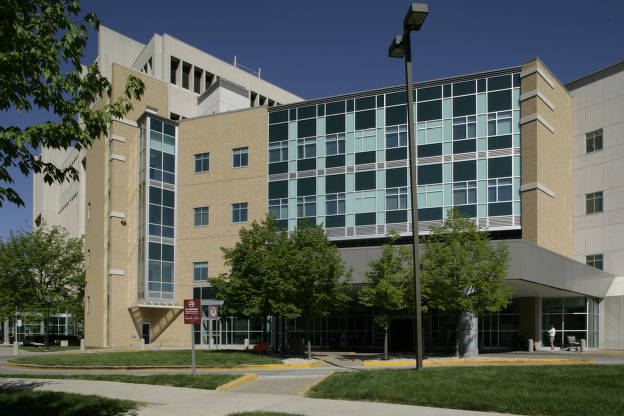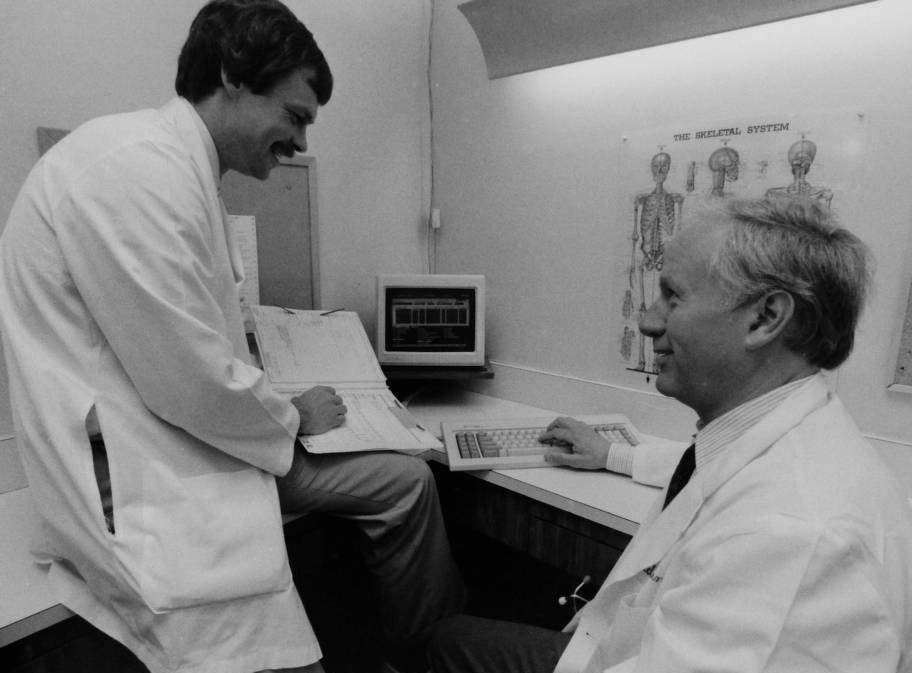Located on the (IUPUI) campus, the Regenstrief Institute is an internationally renowned information and management research institution aimed at the continual improvement of health care delivery.

The Institute grew out of conversations in the late 1960s between Sam Regenstrief, owner of Design & Manufacturing Corporation (D&M), then the world’s largest manufacturer of residential dishwashers, and Dr. , chairman of the Department of Medicine at the (IUSM).
Regenstrief formed the Regenstrief Foundation in 1967, but he lacked a focus for his philanthropy. Hickam, known nationally for his work to improve health care delivery and increase access to care, proposed creating a research institute with a working clinic to allow physician-scientists to test systemic improvements as they were developed. This idea appealed to Regenstrief, who had begun his career at the . He had been introduced to the science of efficiency at Real Silk and this focus had shaped his subsequent career as an industrialist and entrepreneur.
In 1969, the Regenstrief Institute for Health Care was chartered as a department of the , the quasi-governmental unit that also ran the county public hospital. The Institute was designed to develop and study improvements to the care system that would lead to better patient outcomes and support the efforts of researchers and clinicians who make medical care safer, more efficient, and more accessible for everyone. The research of the Institute differs from basic and applied scientific investigation common in medical research in its dedication to this goal. With support from the Regenstrief Foundation, the Institute broke ground on a new home in 1972 and opened to the public in 1975. The Institute’s proximity to the medical school and hospital created a living laboratory for researchers.
Regenstrief research has improved patient outcomes and to streamline care delivery through the effective use and management of health information. Dr. Clement McDonald, a doctor with a degree in biomedical engineering, led one of the Institute’s most recognized projects. McDonald’s team received national attention in the late 1970s after successfully connecting hospital outpatient clinics to pharmacy records and patient charts via computer terminals. The city’s public hospital, then known as Wishard Hospital, became the world’s first fully computerized hospital. McDonald also demonstrated that, by using a computerized reminder system, his team improved patient outcomes. The system prompted providers to take needed actions, such as ordering a test, when they opened a patient chart.

In 1994, the Institute created the freely available international standard for identifying health measurements, observations, and documents, known as LOINC. This standardized health and research communication across borders.
Data collected in the Institute-created system comprises one of the largest longitudinal repositories of actual-time patient data in the world. In 2015, the system held over 500 million individual laboratory and clinical measurements and nearly 50 million clinical images. Scientists working at the Institute and elsewhere continue to mine these data to quickly and effectively evaluate treatments and medications and to develop new hypotheses for testing.
The now-independent Institute moved into a new building on the north side of the IUPUI campus, adjacent to (which replaced Wishard Hospital), in 2015. Over 150 employees work on interdisciplinary and translational initiatives in areas including aging, stroke care and recovery, biomedical informatics, and health services research. The Regenstrief Institute supports staff faculty investigators from the Indiana University School of Medicine, the IU Richard M. Fairbanks School of Public Health at IUPUI, Purdue University, and IUPUI.
The Regenstrief Foundation continues to provide annual financial support to research at the Institute and, in 2001, entered a formal relationship with Purdue University in 2001 resulting in the creation of the Regenstrief Center for Healthcare Engineering at Purdue University.

Help improve this entry
Contribute information, offer corrections, suggest images.
You can also recommend new entries related to this topic.